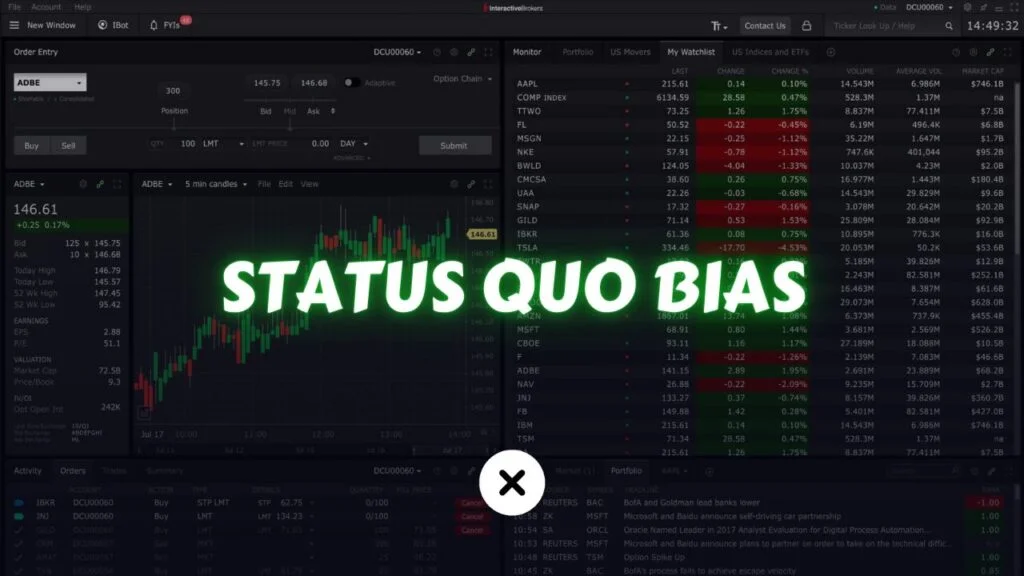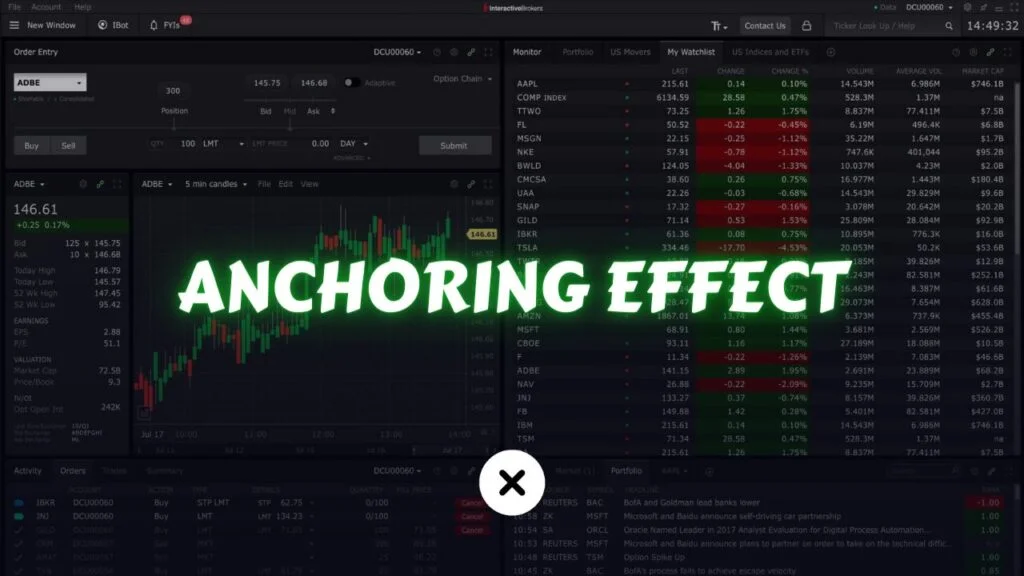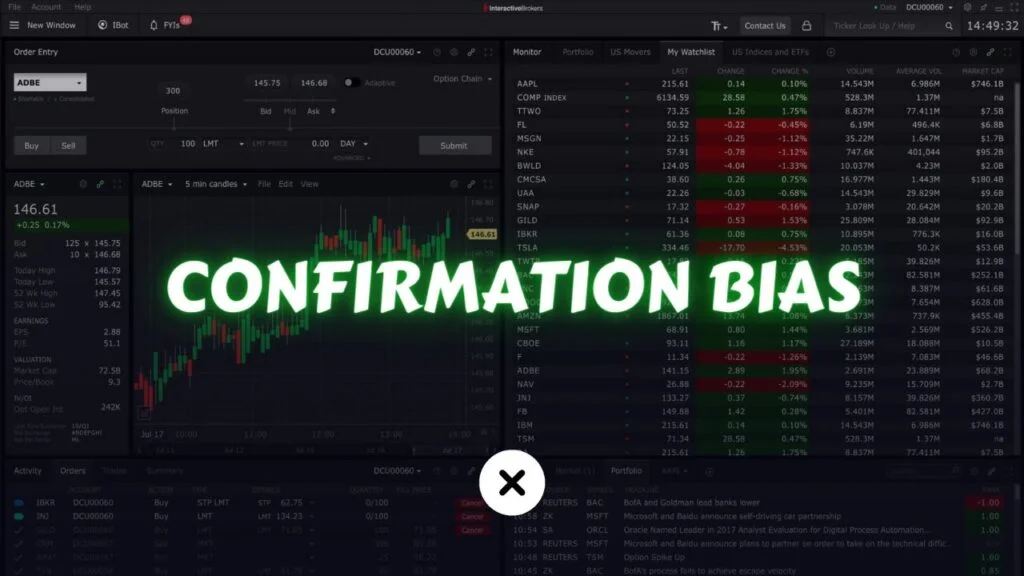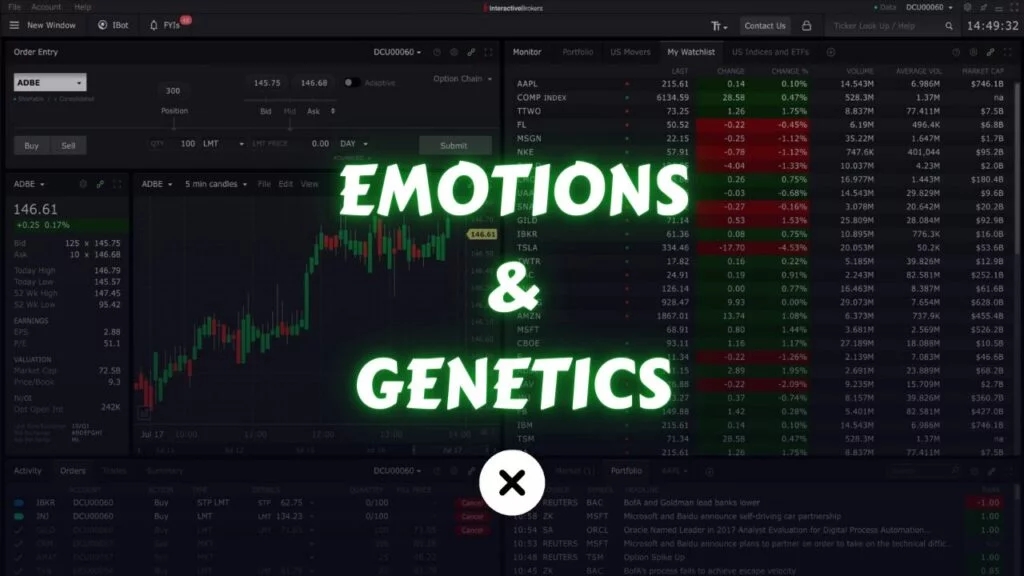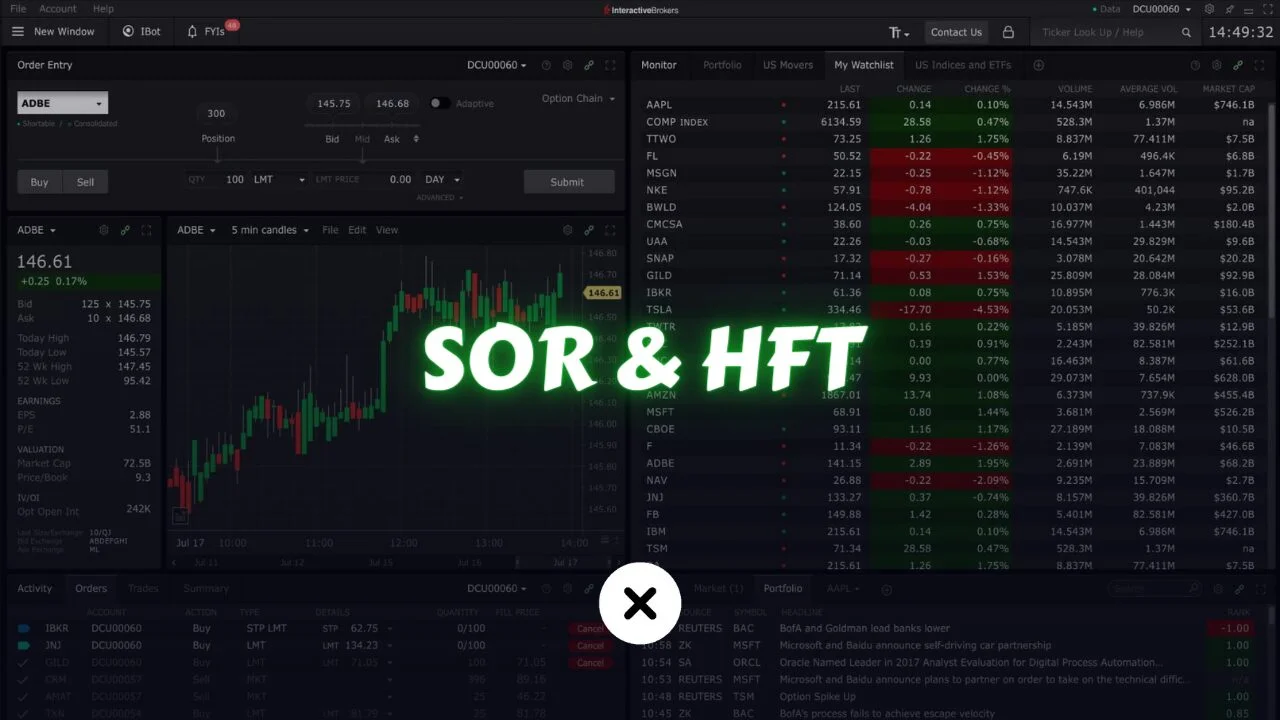
In our previous article, we talked about ECNs. ECNs act as an exchange for buying or selling stocks. I suggest reading that post to understand the following concepts better.
If you’ve bought stocks before, it’s likely you couldn’t pick a certain ECN for the purchase. Usually, brokers don’t let you choose which ECN to use when buying stocks. So, how do brokers decide which ECN or exchange to use for executing your order? They employ a mechanism known as smart order routing.
In this article, we are gonna talk about smart order routing and high frequency traders, what they are? what they do, and as a trader what we should do with them.
What is Smart Order Routing(SOR)?
Smart Order Routing (SOR) is a mechanism used by brokers and trading platforms to efficiently route orders to different trading venues, such as exchanges, electronic communication networks (ECNs), or alternative trading systems (ATS).
The purpose of SOR is to achieve the best possible execution for a given order by considering factors like price, liquidity, speed, and order size.
Due to the utilization of different SOR algorithms by brokers, it is important to understand that not all brokers can deliver the best execution. While this may not significantly impact investors, it can significantly influence day traders’ outcomes.
Now, imagine you want to purchase 1000 shares at a price of $10. How do you think your broker’s smart order router determines which ECN to use for the purchase?
It’s important to consider that various ECNs exist, each with different fee structures. Some ECNs may pay you for adding liquidity but charge for removing it, while others may charge for adding liquidity and pay for removing it. Given these considerations, where do you think your order will be routed to—NYSE, INET, ARCA, or BYX?
Typically, traditional brokers will charge a fixed commission irrespective of the ECN used for buying or selling stocks. However, it is worth noting that there are few brokers who may pass on the ECN fees to you, although such brokers are relatively rare.
Now, when it comes to routing your order, what do you think brokers would do? Would they choose to route it to an ECN that pays them, or would they opt for an ECN that charges them?
It is highly likely that brokers will direct your order to the ECN that offers them the highest payment. However, this approach poses a problem.
As a trader, your primary objective is to ensure that your order is executed and filled promptly. Therefore, if your intention is to buy at $10, it would be advisable not to send your order to the ECN that pays your broker the most.
This is because the ECN that pays the most is likely to charge higher fees to aggressive sellers. By relying on such an ECN, the speed at which your order gets filled may be slower compared to an ECN that rewards the removal of liquidity and charges for adding liquidity.
If given the choice, you would undoubtedly opt for the ECN that offers the best possible execution. However, it is almost certain that your broker will prioritize the ECN that provides them with the highest financial compensation.
Another challenge with SOR is that the majority of algorithms are highly simplistic. To fully comprehend this issue, it is necessary to have a solid understanding of ECNs. If you haven’t already, I recommend reading about ECNs to grasp the intricacies involved.
It is well-known that there are many ECNs available, and these ECNs are typically not located in the same geographical area.
For example, you may have access to ECNs such as BATS, ARCA, EDGEA, or BYX. However, in this scenario, let’s assume that all these ECNs are located in New Jersey, while you, as a trader, are situated in Canada.
On the BATS ECN, there are 1000 shares available at a price of $10. Meanwhile, on the ARCA ECN, there are 500 shares at the same price. Additionally, the EDGEA ECN offers another 500 shares at $10, and finally, the BYX ECN has only 100 shares available at the same price.
You decide to sell 1000 shares at the market price and inform your broker accordingly. They will use their smart order router to execute the order. Since you are removing liquidity, their smart order router will prioritize the ECN that offers them the highest payment. However, before sending the order to the chosen ECN, the broker will attempt to match it internally with another client’s order. If no match is found, the order will be directed to the selected ECN via the smart order router.
In this case, the smart order router selects BYX as it pays the broker the most for removing liquidity. However, upon reaching BYX, only 100 shares are available for sale, resulting in the sale of those 100 shares. The smart order router then reevaluates the situation since there are no remaining shares on BYX. It determines the next ECN in line that either generates revenue for the broker or charges the least. In this instance, the next ECN is EDGEA, as BATS and ARCA would impose higher charges.
However, a complication arises due to the presence of high-frequency traders (HFTs) who have the ability to front-run your order effortlessly.
Who are High Frequency Traders?
High frequency traders (HFT) are individuals or firms that engage in high-speed electronic trading strategies in financial markets. These traders use sophisticated algorithms and powerful computer systems to execute trades at extremely high speeds, often measured in microseconds (millionths of a second).
HFT firms aim to profit from small price discrepancies and market inefficiencies that may exist only for a very brief period of time. They typically employ strategies such as arbitrage, market making, statistical analysis, and other proprietary techniques to identify and exploit these opportunities. By executing a large number of trades within a short time frame, high-frequency traders aim to generate profits through the accumulation of small, incremental gains.
To achieve high-speed trading, HFT firms co-locate their computer servers in close proximity to the exchange’s data centers to minimize network latency. They also invest heavily in advanced technology, high-speed data connections, and ultra-low-latency trading platforms to gain an edge in the market.
High frequency trading has been a subject of debate and scrutiny. Critics argue that HFT may create instability in markets, contribute to market volatility, and give certain market participants an unfair advantage. Proponents, on the other hand, argue that HFT adds liquidity to the markets, narrows bid-ask spreads, and improves price efficiency.
Regulators in many countries have implemented measures to monitor and regulate high-frequency trading activities to ensure market fairness and stability. These regulations include measures such as circuit breakers, position limits, and enhanced oversight of HFT firms.
Returning to our example, it is important to note that high frequency traders have strategically located servers near ECNs to minimize latency. They possess exceptional speed in executing trades.
Suppose your smart order router sells 100 shares on BYX and proceeds to route the order to EDGEA. The high frequency trader on BYX, having observed your order, realizes that you are likely headed to EDGEA next due to its favorable fee structure. Consequently, the high-frequency trader swiftly reaches EDGEA before you and sells ahead of your order.
Let’s assume they sell 400 shares, leaving only 100 shares available for you when you arrive. As a result, your smart order router can only obtain those 100 shares. However, since you still require an additional 800 shares, the smart order router will search for the next best ECN available.
The high frequency trader intentionally left 100 shares for you as a way to confirm whether your order was still active. If you are able to acquire those 100 shares, it serves as confirmation that your order is indeed still in progress.
Once you acquire those 100 shares, the high frequency trader recognizes that the next optimal ECN for your order is ARCA. Before your smart order router reaches ARCA, the high frequency trader swiftly arrives and sells all the available shares. This pattern continues until there are no shares left at the $10 price level.
At this point, you have only managed to sell 200 shares, leaving 800 more to sell. Since you initially placed a market order and no shares are available at $10, the smart order router adjusts and seeks to sell at $9. It looks for the most favorable ECN, which in this case is BYX, where 800 shares are available for you to sell.
However, who do you end up selling those shares to? It turns out that you are selling them to the high-frequency trader who had previously shorted all the shares and is now buying them back from you at a lower price.
Within a matter of microseconds, you ended up receiving a worse price for your trade. This scenario highlights what occurs behind the scenes with smart order routing and reveals one of the strategies employed by high-frequency traders.
High frequency traders generate minuscule profits with each transaction, but their strategy revolves around executing an enormous number of trades throughout the day.
To provide an example, high frequency traders typically generate an average profit of $0.001 per trade. This means they would need to execute 100 trades to make 10 cents, and a thousand such sets to accumulate $1. Considering the vast number of trades they engage in daily, it’s remarkable to imagine the sheer volume of their buying and selling activities. Despite the small profit per trade, their extensive trading volume enables them to generate millions of dollars in revenue.
The majority of smart order routers are not as sophisticated as high frequency traders in terms of their coding and intelligence. They are vulnerable to manipulation, making it relatively simple for high frequency traders to exploit the system and generate profits. Consequently, if you are engaged in trading, it is advisable to avoid relying solely on smart order routing.
Both retail traders and professional traders are unable to compete with high frequency traders due to their extraordinary speed advantage.
So if you want your order to be executed efficiently and fast you should be able to choose the desired ECN for your order. Interactive Brokers is one example of a broker that allows you to select your preferred ECN.
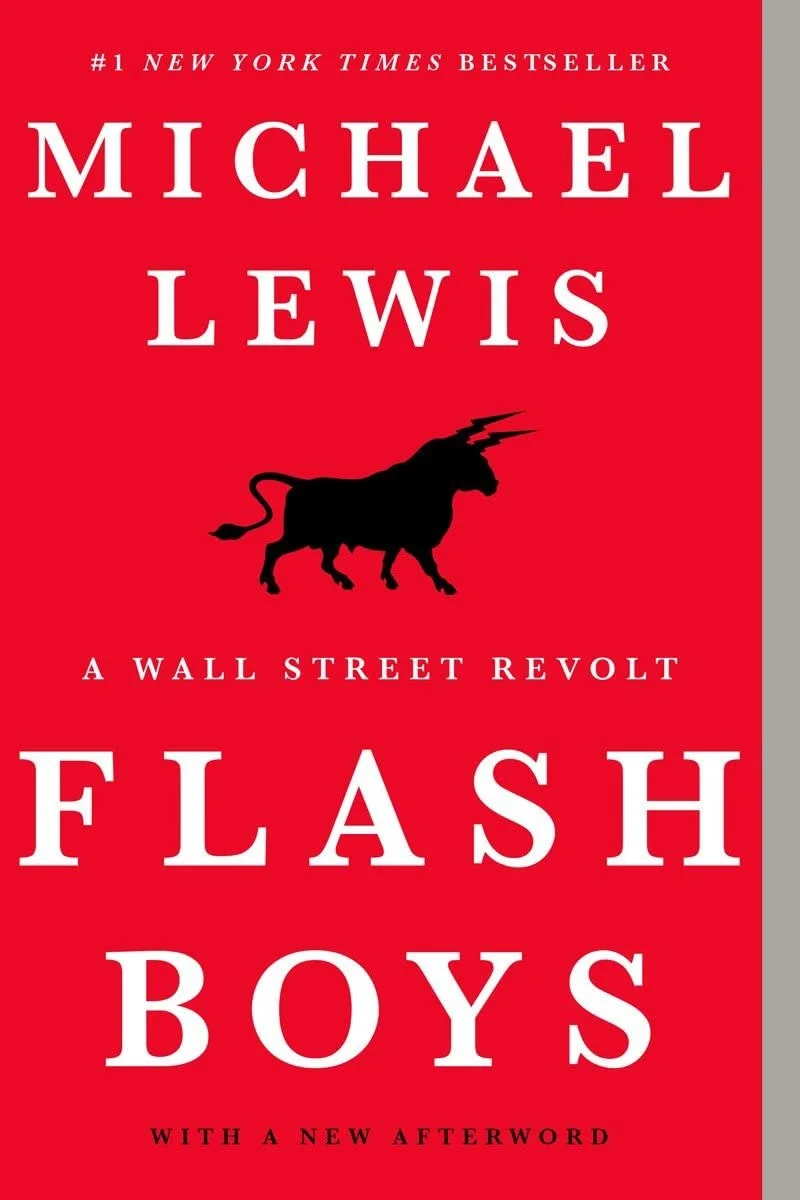
“Flash Boys: A Wall Street Revolt” is an excellent book that delves into the world of high frequency traders. if you like to learn more about high frequency traders I suggest you read this book.
Latency in Trading
Latency in trading refers to the time delay between the initiation of a trade and its execution. It is the measure of how long it takes for a trading order to reach its destination and receive a response.
In the context of electronic trading, latency is influenced by various factors, including the speed of data transmission, network connectivity, processing times, and the distance between trading systems.
In the pre-1980s era, latency in trading used to be around 2 minutes. However, with the establishment of the quotation system by NYSE in the 1980s, it reduced to approximately 20 seconds. By 2007, latency had further decreased to around 100 milliseconds, and by 2009, it had reached approximately 1 millisecond.
Presently, latency has reached an incredibly low scale, measured in nanoseconds or even lower. This remarkable reduction in latency is a result of continuous advancements in coding techniques and the adoption of cutting-edge technologies such as advanced laser data transmission.
Benefits of Low Latency
As a trader, it is essential to have low latency for several reasons. Firstly, low latency enables you to base your trading decisions on the most up-to-date information available in the market. By receiving and processing data quickly, you can react promptly to changing market conditions and make more informed trading choices.
Secondly, low latency provides a competitive advantage in the trading landscape. In fast-paced markets, being the first to execute a trade can make a significant difference. With low latency, you increase your chances of being the earliest participant to act upon profitable opportunities. By swiftly seizing those opportunities, you can potentially secure better prices, capitalize on market inefficiencies, and achieve more favorable trading outcomes.
Having a low execution speed restricts your ability to pursue fast-paced trading strategies. To effectively implement such strategies, it is crucial to align your trading speed with the specific requirements of your chosen strategy.
Conclusion
Smart Order Routing (SOR) and High-Frequency Trading (HFT) are critical to modern financial markets. SOR optimizes trade execution by directing orders to the best venues, but it can sometimes prioritize broker profits over trader benefits. HFT firms use advanced algorithms and high-speed trading to exploit market inefficiencies, adding liquidity but also raising concerns about market fairness.
Traders should understand the dynamics of SOR and HFT to make informed decisions, and consider using brokers that allow selection of specific ECNs for better execution. Staying updated on these technologies is essential for navigating today’s fast-paced trading environment.
